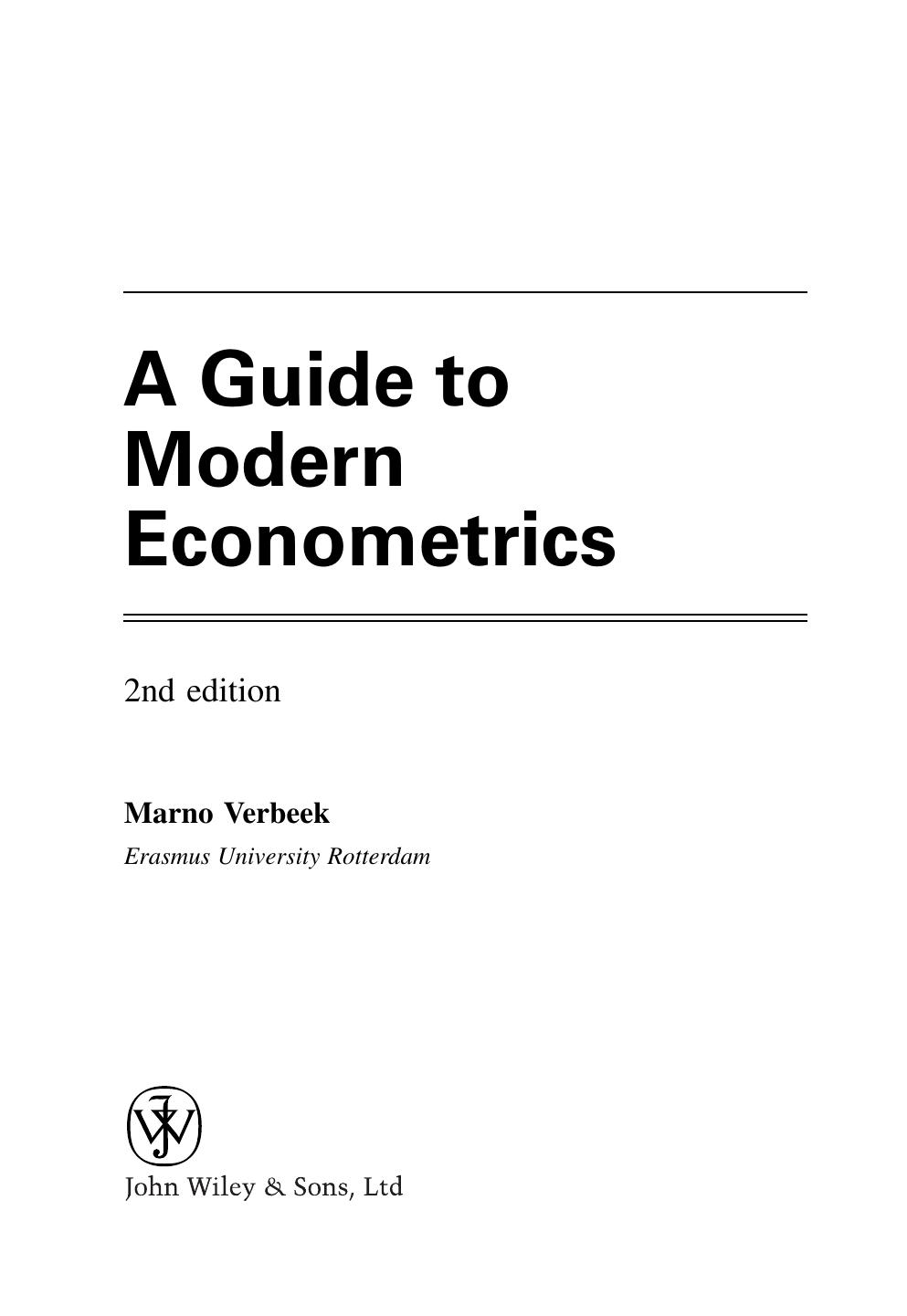A Guide to Modern Econometrics by Marno Verbeek

Author:Marno Verbeek [Verbeek, Marno]
Language: eng
Format: epub, pdf
Tags: Business & Economics, Econometrics, Economics, General
ISBN: 1119951674
Google: kI2VZwEACAAJ
Amazon: 1119951674
Goodreads: 13839125
Publisher: Wiley
Published: 2000-06-23T05:00:00+00:00
7.4.4 Specification Tests in the Tobit Model
A violation of the distributional assumptions on will generally lead to inconsistent maximum likelihood estimators for and . In particular, non-normality and heteroskedasticity are a concern. We can test for these alternatives, as well as for omitted variables, within the Lagrange multiplier framework. To start the discussion, first note that the first-order conditions of the loglikelihood with respect to are given by
7.73
where we define the generalized residual as the scaled residual for the positive observations and as , evaluated at , for the zero observations. Thus we obtain first-order conditions that are of the same form as in the probit model or the linear regression model. The only difference is the definition of the appropriate (generalized) residual.
Because is also a parameter that is estimated, we also need the first-order condition with respect to to derive the specification tests. Apart from an irrelevant scaling factor, this is given by
7.74
where we defined , a second-order generalized residual. The first-order condition with respect to says that the sample average of should be zero. It can be shown (see Gouriéroux, Monfort, Renault and Trognon, 1987) that the second-order generalized residual is an estimate for , just like the (first-order) generalized residual is an estimate for . While it is beyond the scope of this text to derive this, it is intuitively reasonable: if cannot be determined from and , we replace the expressions with the conditional expected values given all we know about , as reflected in . This is simply the best guess of what we think the residual should be, given that we only know that it satisfies .
From (7.73) it is immediately clear how we would test for omitted variables . As the additional first-order conditions would imply that
Download
A Guide to Modern Econometrics by Marno Verbeek.pdf
This site does not store any files on its server. We only index and link to content provided by other sites. Please contact the content providers to delete copyright contents if any and email us, we'll remove relevant links or contents immediately.
International Integration of the Brazilian Economy by Elias C. Grivoyannis(57270)
The Radium Girls by Kate Moore(10901)
Turbulence by E. J. Noyes(7031)
Nudge - Improving Decisions about Health, Wealth, and Happiness by Thaler Sunstein(6629)
The Black Swan by Nassim Nicholas Taleb(6182)
Pioneering Portfolio Management by David F. Swensen(5599)
Rich Dad Poor Dad by Robert T. Kiyosaki(5140)
Zero to One by Peter Thiel(4816)
Man-made Catastrophes and Risk Information Concealment by Dmitry Chernov & Didier Sornette(4728)
Secrecy World by Jake Bernstein(3773)
Millionaire: The Philanderer, Gambler, and Duelist Who Invented Modern Finance by Janet Gleeson(3565)
Skin in the Game by Nassim Nicholas Taleb(3455)
The Age of Surveillance Capitalism by Shoshana Zuboff(3411)
The Money Culture by Michael Lewis(3276)
Skin in the Game: Hidden Asymmetries in Daily Life by Nassim Nicholas Taleb(3259)
Bullshit Jobs by David Graeber(3171)
The Dhandho Investor by Mohnish Pabrai(3161)
The Wisdom of Finance by Mihir Desai(3069)
Blockchain Basics by Daniel Drescher(2883)
